Pan Scroll Zoom 11: Architecten Jan De Vylder Inge Vinck
– Fabrizio Gallanti, Inge Vinck and Jan De Vylder
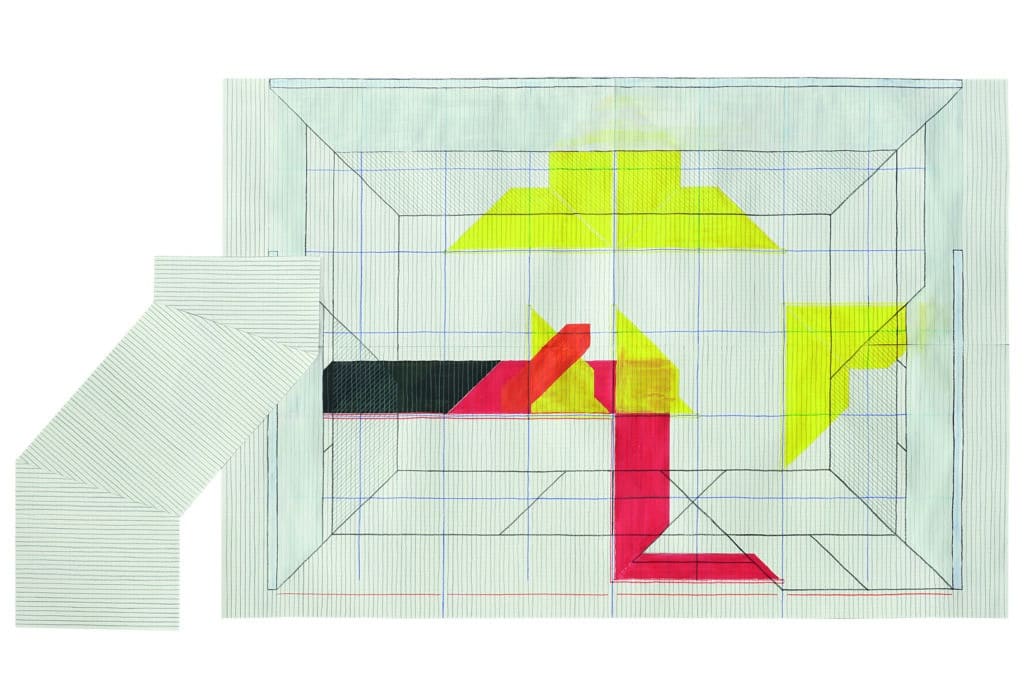
This is the eleventh in a series of texts edited by Fabrizio Gallanti on the challenges in the new world of online architectural teaching and, particularly, on the changing role of drawings in presentations and reviews. In this episode Fabrizio interviews Jan De Vylder and Inge Vinck about their teaching at ETH Zürich and their practice architecten jan de vylder inge vinck.
Fabrizio Gallanti: In several documents associated with your courses at ETH, I have often read a very succinct and touching invitation addressed to your students in which you say: ‘you can draw, you can write and you can do models’. Is this your motivational speech, to encourage them to overcome the fear of expressing their ideas?
Jan De Vylder: The more we are engaged with architectural pedagogy, the more Inge and I understand how crucial hand drawings and physical models are. We both believe strongly that anyone can draw and that it is not necessary to have had a structured training in that area. In fact, we never impose a drawing course, but at the beginning of each design studio we are curious to discover how each student can draw – even in the most infantile way.

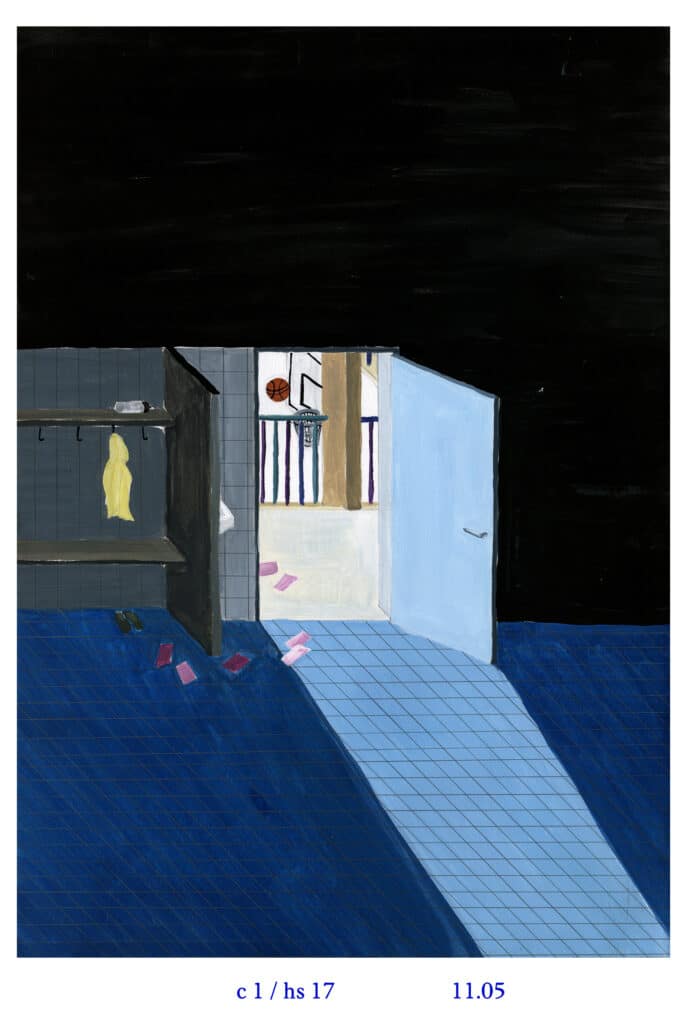
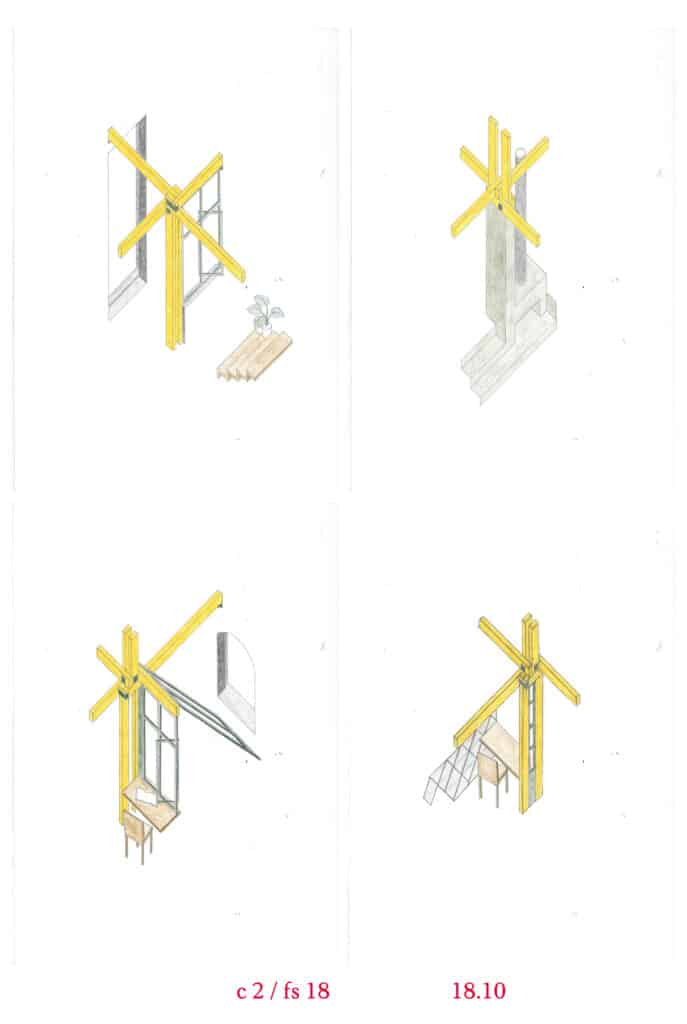


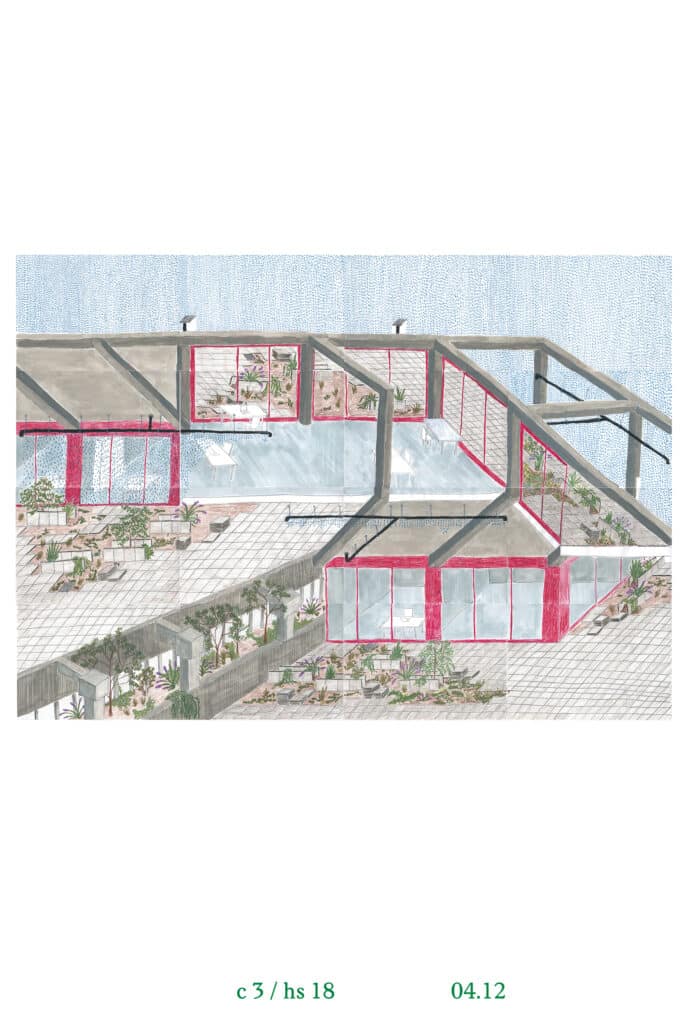
At the end of each semester, we produce a ‘calendar’ with a drawing for each day. The calendar is a selection of 365 drawings from a much larger number; students might have produced in total 3,000 to 6,000 drawings, using any sort of technique: charcoal, pencil, watercolour, oil painting. Our studios are quite large: between 24 and 27 students. These books are also important to communicate to the cohort of students that follow that through the continuous action of drawing – even those students who think they cannot draw by hand – they will progressively acquire the confidence to express their architectural ideas through that means. Drawing is a language that we all share: it is like breathing.
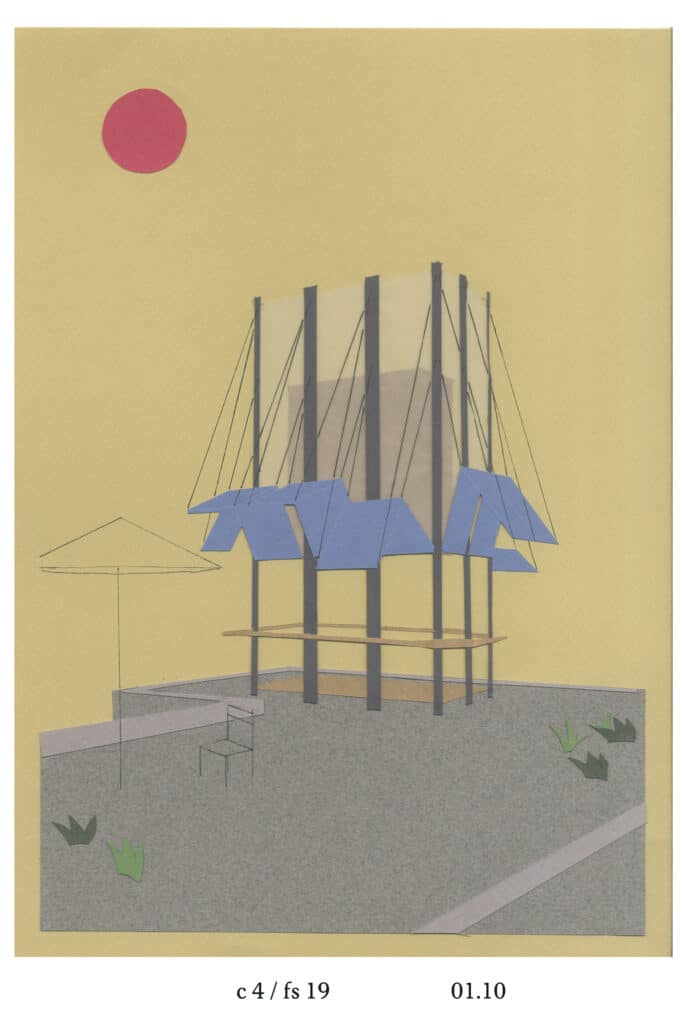
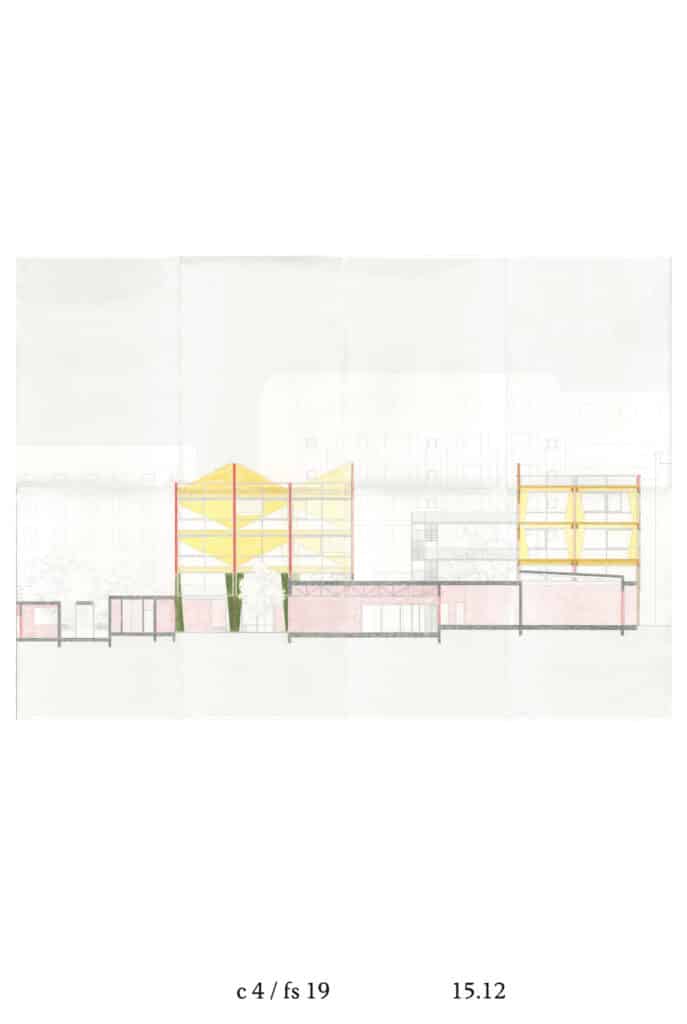

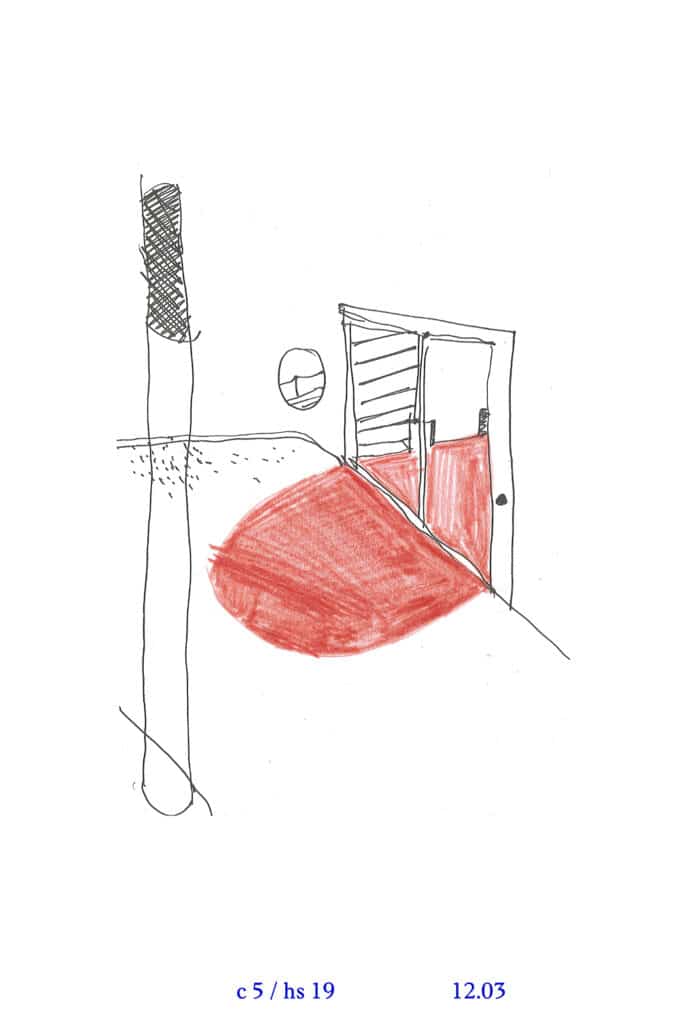
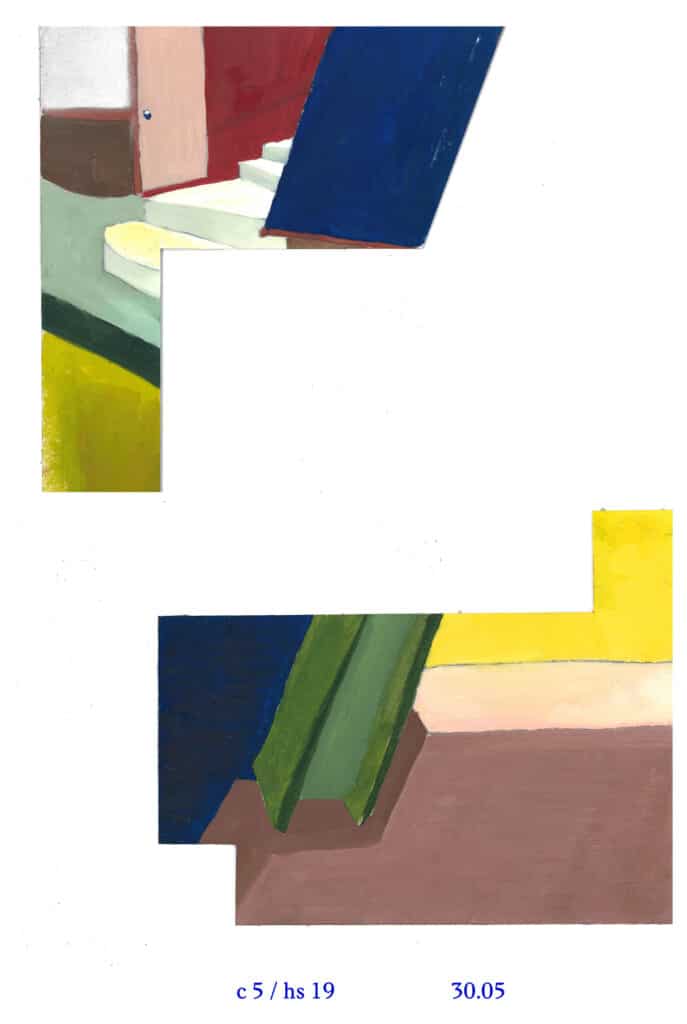
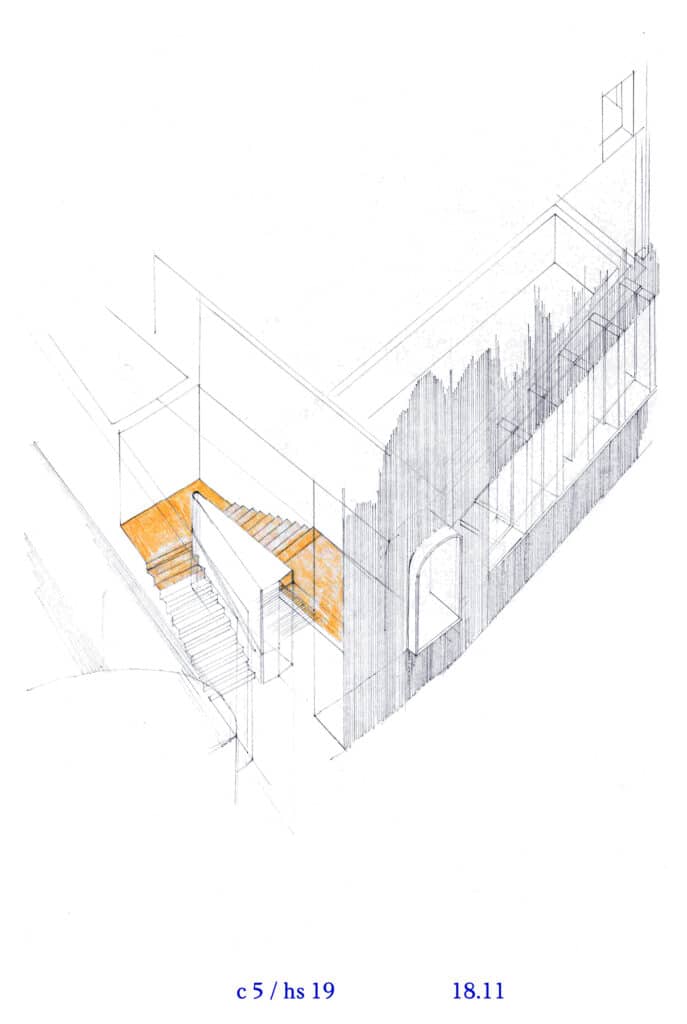
FG: But students who take your courses already have some years of school in their bones. Why do you feel the urge to make that statement? Isn’t it obvious, somehow?
JDV: Yes, but this statement is also meant to accompany one of our key positions: that architecture is accessible to everyone and that you do not need a professional education to practise it. When we discuss, for instance, a structure with our students, sometimes it might make no sense and might be collapsing, so we ask them if they ever made a hut when they were kids and if it ever collapsed and they are always very proud to say that it didn’t. ‘Was it sheltering you from the rain?’ ‘Of course it was,’ they tell us. This is a way to understand how architecture is inherent to being human.
Inge Vinck: That physicality is very important to us and that is why we insist on drawing by hand and producing physical models; the experience of ‘making it work,’ the resistance of the materials and their properties, is radically different from using the computer. With the computer the real tension is towards perfecting the final output, while when one does things by hand the result will perhaps be shabby and imperfect, but one learns while doing it and discovers unimaginable ideas and potentials. For us, it is important to see the action of drawing as a means to acquire and refine knowledge; we really see drawing as a form of thinking. Drawing for us is twofold: on the one hand, it is a tool with which to observe and describe reality; on the other, it is used to project and to imagine things that do not yet exist.
JDV: We are not, in any case, opposed to digital instruments, but we are eager to explore some of its imperfections. Can one use CAD software, where lines do not automatically perfectly ‘snap on’ but ‘snap off’ instead? Can one replicate digitally the richness of the accidents current in the analogue realm, such as drawing with an unsharpened pencil? We realised that the most interesting architects have used digital devices in ways that are slightly different from what they were initially conceived for. With the computer the risk is always to take too cerebral an approach, where one thinks about what to do before doing it, while with hand drawings there is a spontaneity and immediacy often more conducive to developing ideas that might not have been legible at the beginning of the process. The closeness to the body that drawing allows is for us very stimulating. The simplicity of the devices that we use allows us to touch on the themes and topics of our studio, very efficiently, without the need to depend on very sophisticated technologies.
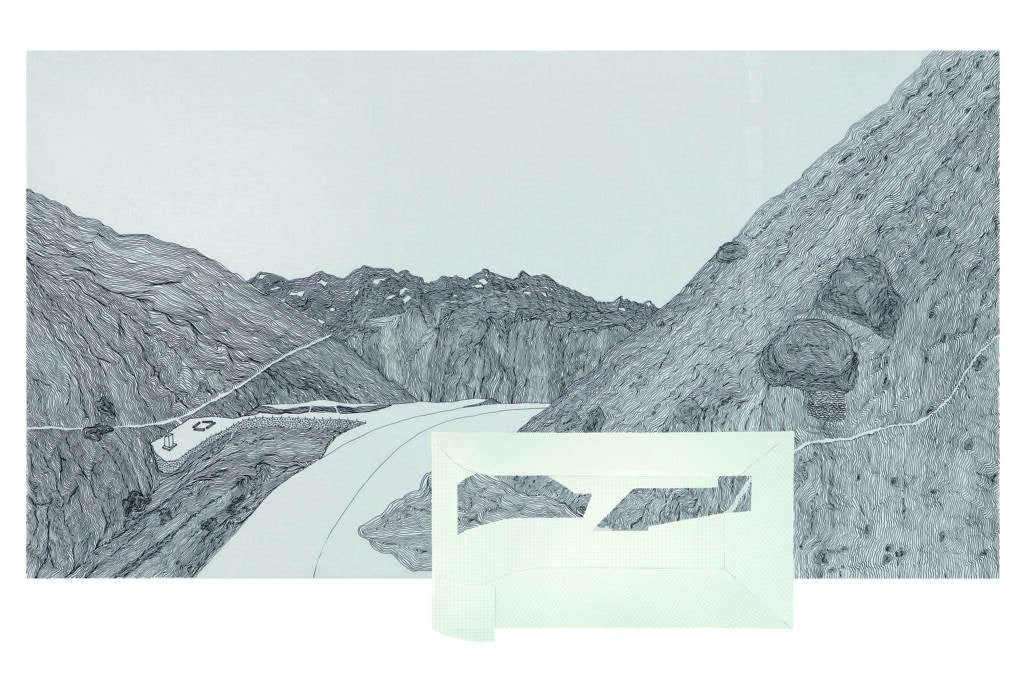
FG: Is that attention to the primordial act of drawing a way to help students to partially unlearn what they were taught before?
IV: It is a way to allow for freedom, to liberate them from constrictions and rules that are inherent in a university setting.
JDV: We have a sort of motto that we use in our teaching as well as in our professional practice: ‘let’s do what we should not do’. When we find ourselves cornered and stuck in the comfort of certain conventions, doing the opposite of what reason or habit dictate is a way to gain another sort of focus. In our projects we often find and develop ideas in the periphery, doodling and hovering around. In the frame of the university that methodology, or, actually, lack of methodology could be felt as undermining the bases of higher education itself as there is not a codified and scientific system of transmission of objective knowledge and established actions.
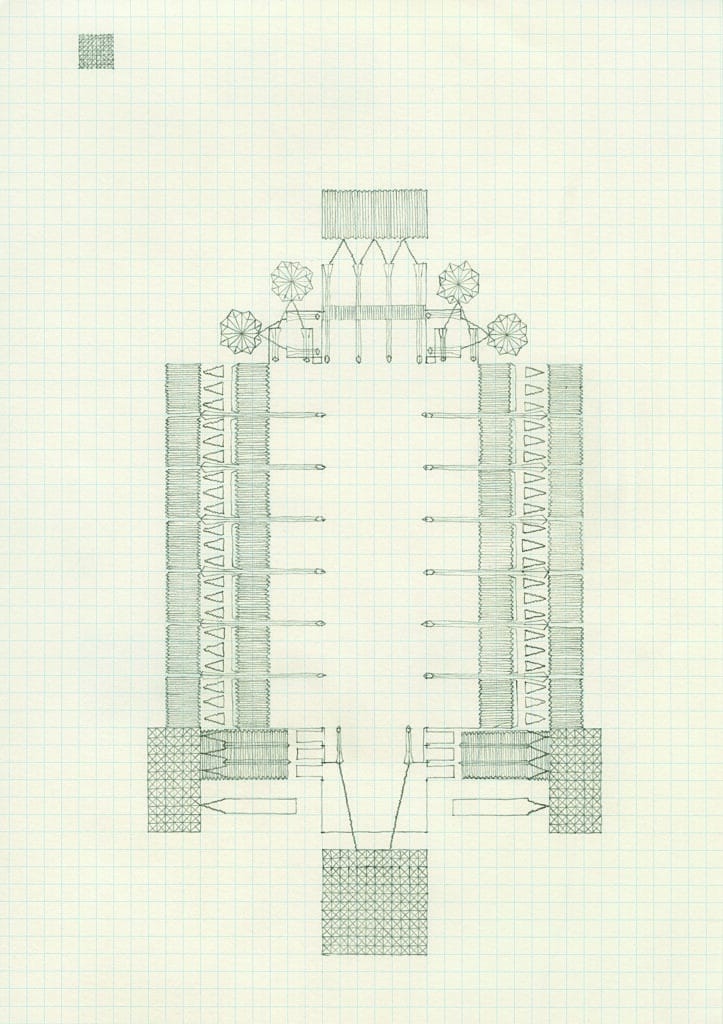
FG: Is this a reason why you use the term ‘movement,’ as in classical music, to describe the consecutive phases of your design studios? Is it a way of resisting the normative crystallisation of architectural teaching? ‘Movement’ is an interesting term, as it suggests the freedom mentioned before, nevertheless within the stringent limitations of a musical section. I assume that there is a clear intention in using such term within a school such the ETH, with its robust scientific tradition.
JDV: The ETH is a polytechnic institution. What we tend to say to our students allows us to operate at the fringe of that lineage: we tell them not to analyse but to observe; not to synthesise but to imagine. In both cases, these expressions correspond to our very strong faith in their subjective capacities. Early on we ask students to redraw architectural references and that exercise allows them to reveal their abilities and propensities. It is the introduction of the subjective, confronted with the objectiveness of a piece of evidence, another architecture designed in the past.
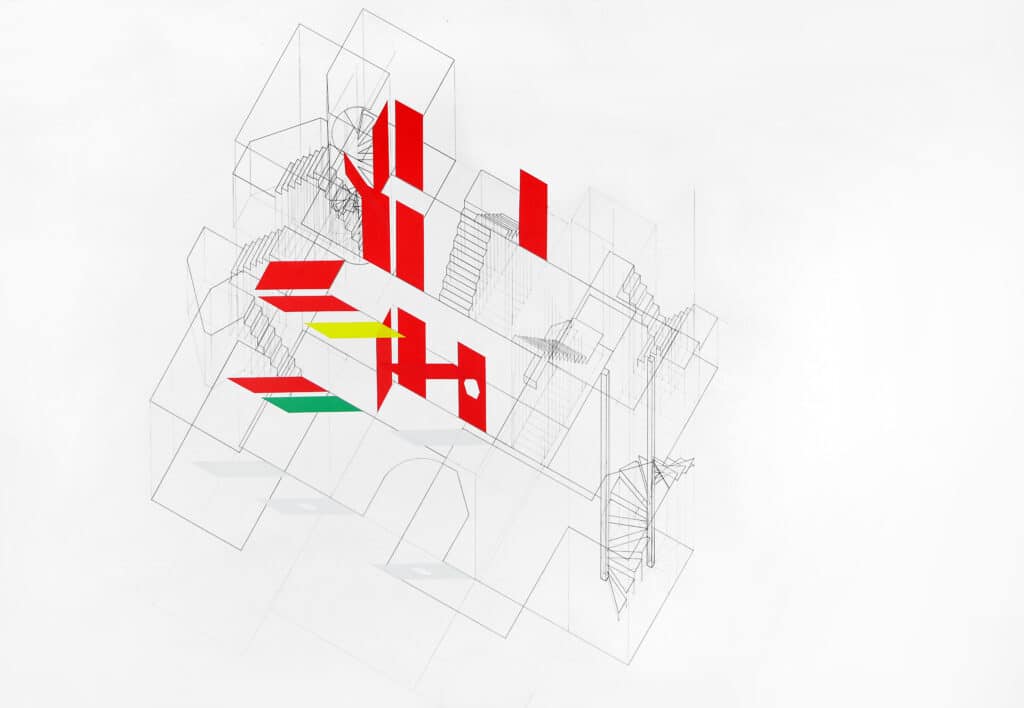
FG: So you don’t teach drawing per se, but just push them into the swimming pool to learn to swim?
JDV: We don’t teach drawing, and we also say to them that we don’t teach architecture. We will talk about it, we will explore it. We adopt the same approach in our studio; we consider that we are all architects.
FG: As when Joseph Beuys famously said that we are all artists?
JDV: Exactly: therefore an architectural office or a design studio in a school are communities where everyone is an architect. There is an exchange between our knowledge and background because we are older, and the freshness and openness that the students bring in because they are younger – it becomes a process of mutual influence and growth. But again, we want to insist that the knowledge that we manage is neither erudite nor esoteric, it is just around us. In the past semester, because of the confinement caused by the pandemic, we proposed to the students that they mentally measure the spaces in which they were living and first draw them, then to start to reshuffle things around the house, and to document these changes. For us, it was an astounding discovery to realise that we all already knew what we came to study at university, that it is just around us. We think that we know how to dress, how to cook and eat, while we might have forgotten the most basic know-how about how to live in a house.
IV: The results of these initial exercises were surprising as they manifested the depth of the observational capacities of each person as well as the many imaginative changes to one’s environment that could be achieved by the simple displacing of furniture and objects.
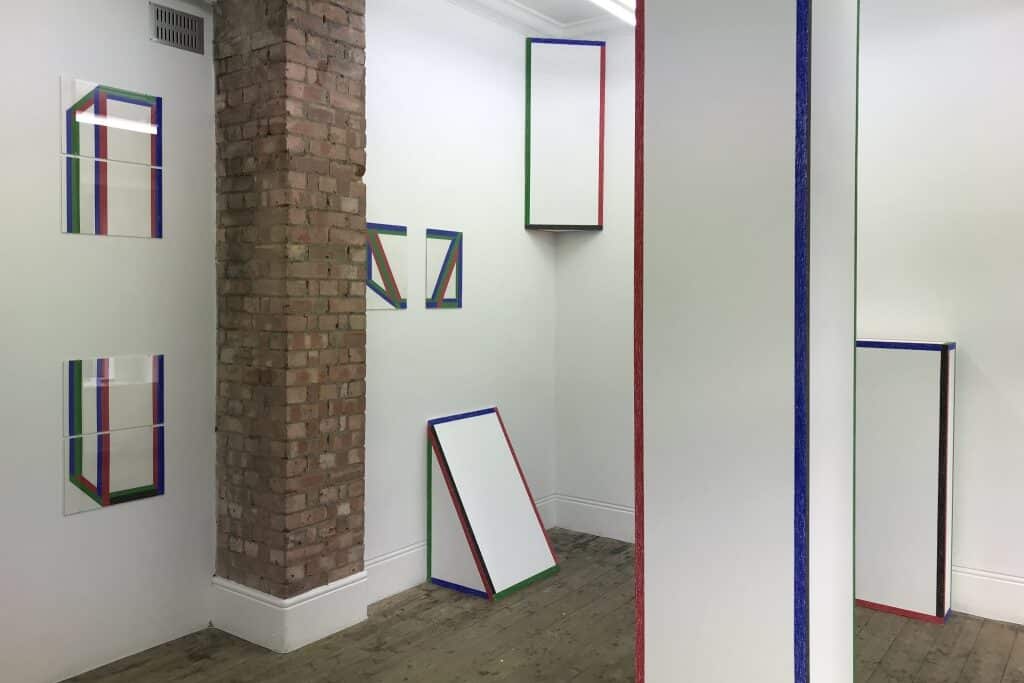
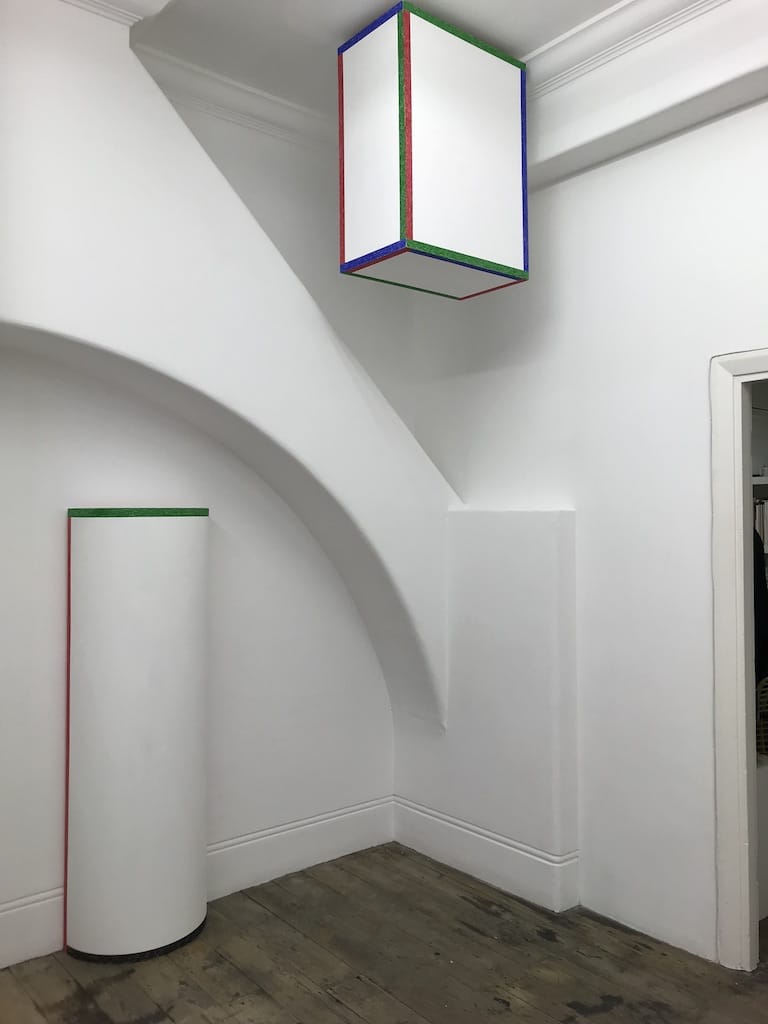
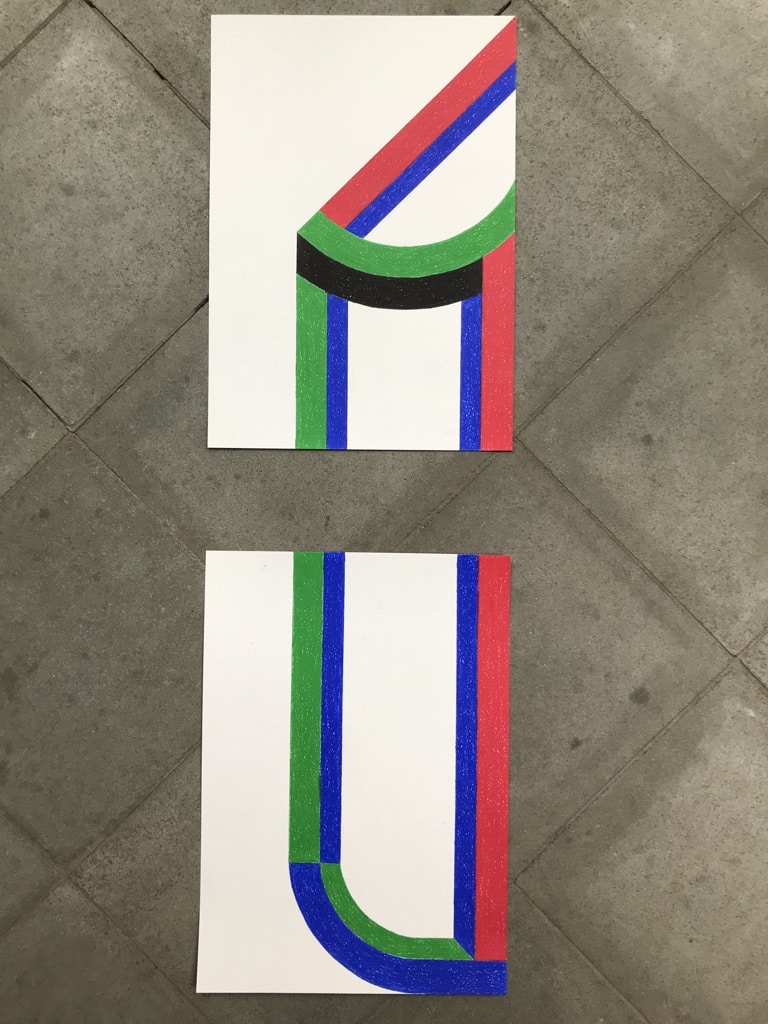
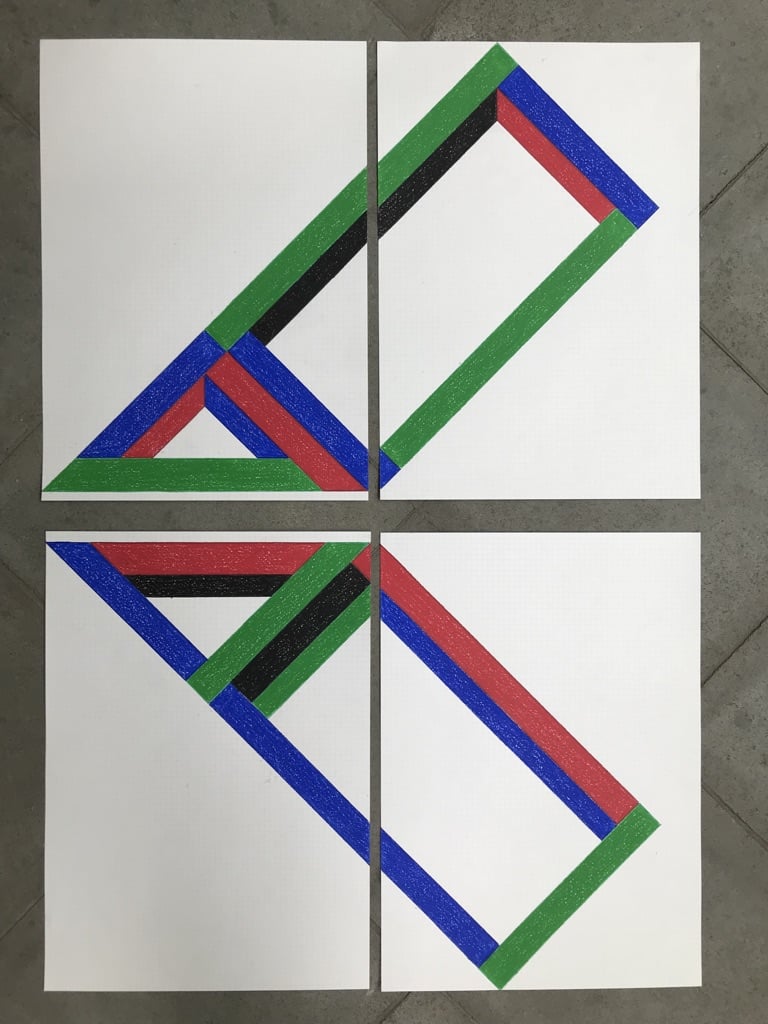
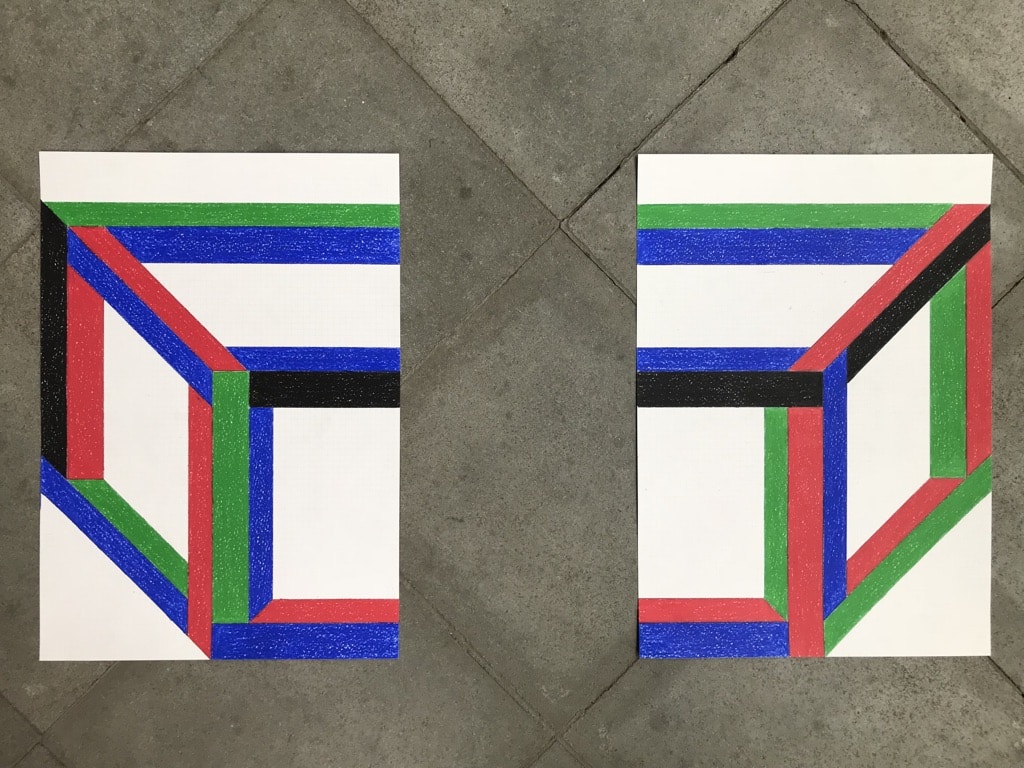
FG: Would you feel an affinity with authors such as Bernard Rudofsky who predicated an idea of architecture without architects? And if so, why do you even bother teaching at a university?
JDV: Yes, we do recognise the value of figures such as Rudofsky, yet at the same time we feel an obligation to intervene in the realm of higher education in order, perhaps, to reintroduce a certain non-conformist attitude. At the beginning of our tenure at ETH it was hard, for instance, to convince the administration that our studio had difficulty in following a set list of required deliverables as these are very variable depending on each student and project. Why ask for four sections when sometimes a very large one would suffice?
FG: In how you structure your courses, there is a strong emphasis on the act of observation, which seems almost equivalent in relevance to actually designing. Are there differences in the way that drawings are carried out for these activities, or do you see them as continuously intertwined?
JDV: No, there is no difference: drawing is a continuous flow. Actually, even a built project is just a step in a process of constant drawing.
FG: Are you just as obsessive with the archiving of the drawings in your practice as you are in the teaching? Do you edit and filter things out from what has been collected?
JDV: We tend to keep as much as we possibly can, but sometimes we have to throw things away, just because of the demands of space. Our office at ETH is a huge warehouse, in fact. Our main principle of selection is that we tend not to dispose of things when we do not really know why we should do so. That approach has turned out to be quite useful; in the past we serendipitously found drawings unrelated to the project currently under development where we have identified some intuition or a solution that was immediately applicable. This idea that the archive is just a vast unity, almost without any internal separation, is identical to the idea of drawing as a continuous process.
IV: Quite often we invite the students to look together at their sketchbooks and we find there quite amazing ideas. That helps to build their self-confidence.
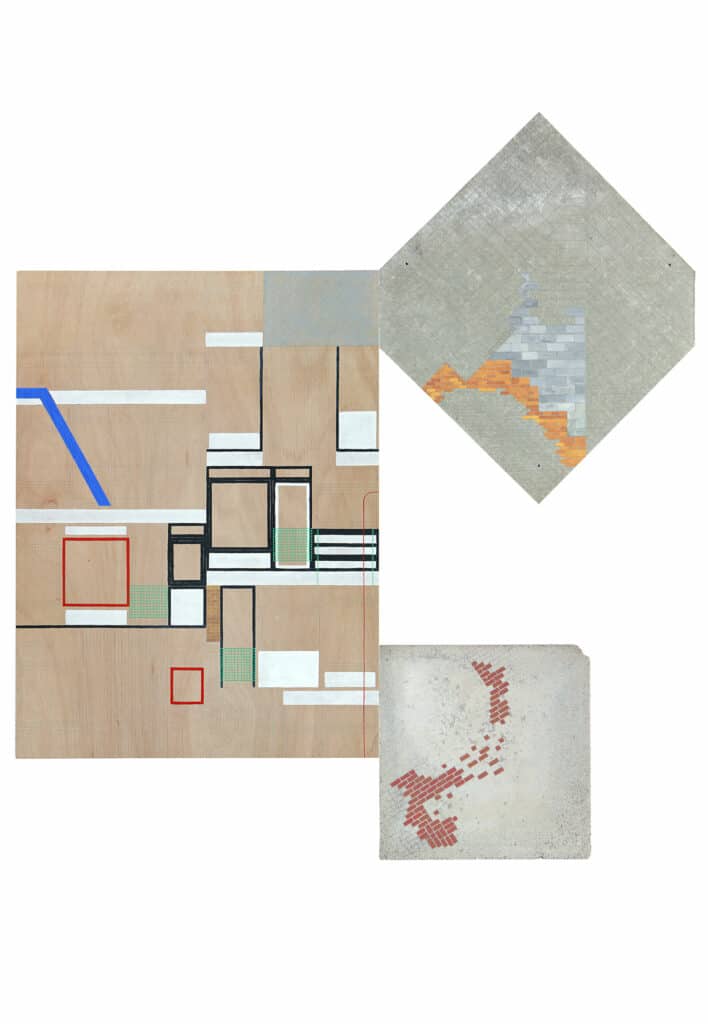
FG: You archive, edit and recirculate the works from your students in Zurich. Are you equally careful with your own work?
JDV: We draw constantly in sketchbooks, often without any connection to a specific project. Later, by chance sometimes, we have sometimes found ideas in drawings from the past that we can employ for an ongoing project. So we keep almost everything, scattered between our home and the office here in Belgium.
IV: As of now, our archive is really not rigorously structured, it is more a working tool to continue to explore ideas. Sometimes, we joke that we really have difficulty in throwing stuff away.
FG: But are you thinking about the future, somehow what legacy will be constituted by such a mountain of work?
JDV: We are not so old! I am joking, but yes, we are starting to reflect on that issue. But really, we have perhaps too much stuff. In any case, I am a lot less organised than Inge.
FG: Even if you do not ‘teach’ drawing per se, do you try to impose a certain rigour or rhythm on the production? What if a student decides that he or she will not produce a single drawing in the whole studio? Is it an option?
IV: If the proposed alternative is convincing it could be a possibility. Returning to this idea of ‘movements,’ there is nevertheless a sequence of modes, starting with the initial observations, then we try to introduce some references, quite often from other disciplines, and then slowly we move towards the project. Students are encouraged to make mistakes, test alternatives, try things that they have never done before: an attitude facilitated by the fact that there is not a pre-established set of demands to respond to. A few years ago, a student realised that she could paint, something that she had never explored before, and so she carried that novel interest throughout the whole studio, actually producing quite amazing material in the end. This is where we want the studio to go as a space where each person can identify a direction for their own growth as architects. It is also crucial to recognise how there are numerous mutual interactions and inspirations occurring in the collective space that a studio can provide.
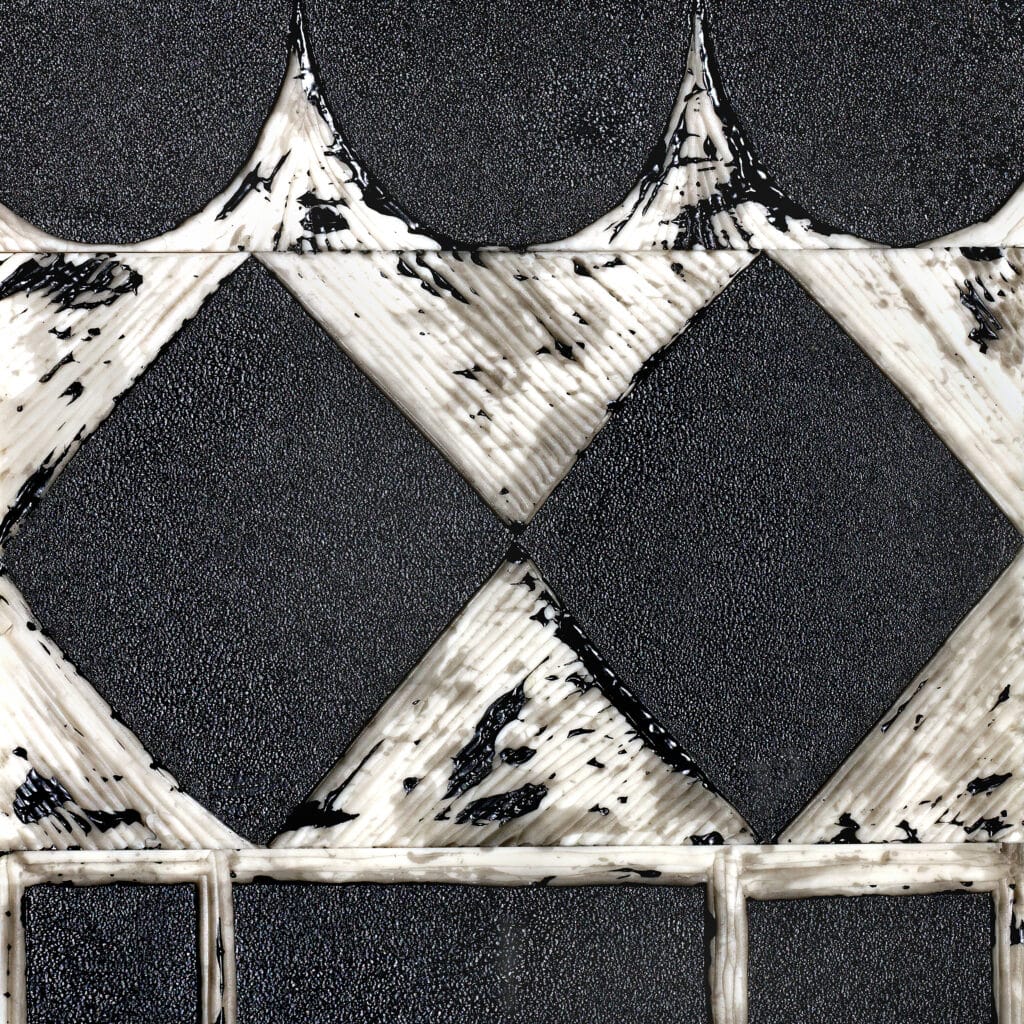
JDV: In that sense, the framework provided at the ETH has immensely impacted on our teaching because we are finally given the resources to properly archive and document the work of the students, creating therefore a constellation of references that grows one year after the other. The culture of the studio becomes an entropic entity where the works of previous students will become material for further developments. Inge and I already operate like this in Belgium and at Mendrisio, but this is the first time that we can really build up the results of these experimentations, accruing year on year. The archive is permanently accessible.
FG: You often mention the terms ‘archive’ and ‘references’. You belong to a generation of cultivated architects who have returned to consider architectural history as a source for contemporary production. Let’s tag this loose grouping, for simplification, as the San Rocco architects. How is the history of architecture mobilised in your teaching?
JDV: In the first two or three weeks of what we call observation, we would provide some historical examples that intersect the themes of the studio. We deliberately provide fragmentary and incomplete information and we invite the students to simply look at what is before their eyes, perhaps a plan or a grainy photograph. We don’t want them to spiral into historiographical research, but rather to use graphic tools to extract some personal knowledge and judgment from what is there. We hope they will be able to explain why they love or hate something.
FG: You very much insist on these properties of the drawing as a mechanism to reveal unsuspected truths, which sometimes were not predictable. Would you say that when you engage in drawing, you do not know exactly where it is going to end? When referring to the psychology of writers, Zadie Smith makes a distinction between the ones who are ‘macroplanners’ (those who have the whole scaffolding of their novel in their mind and will produce the parts that fit), versus the ones who are ‘micromanagers’ (those who develop their idea as they go along). Are you more macroplanners or micromanagers?
I saw pictures of a gigantic drawing made by your office, presented in the exhibition ‘Les usages du monde’ in Lille last year, that I believe is 30 metres long. When you started it, did you have an idea of what it was going to be, or did it evolve almost organically?
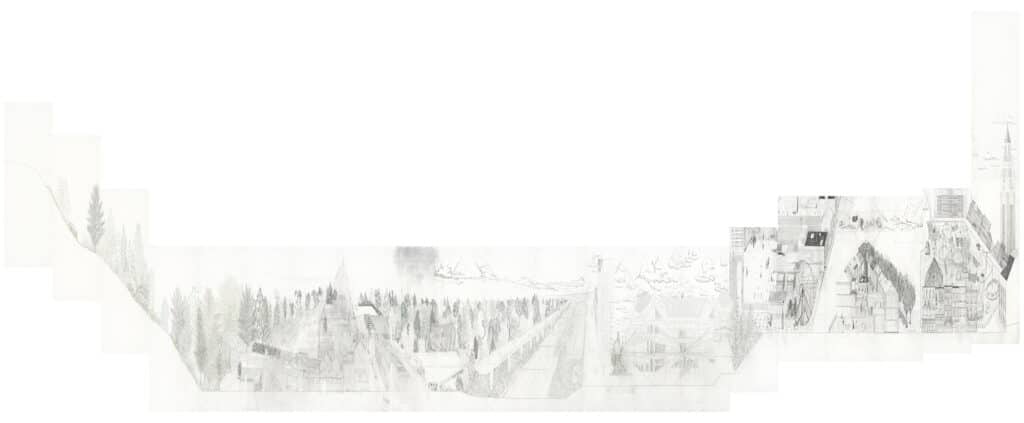

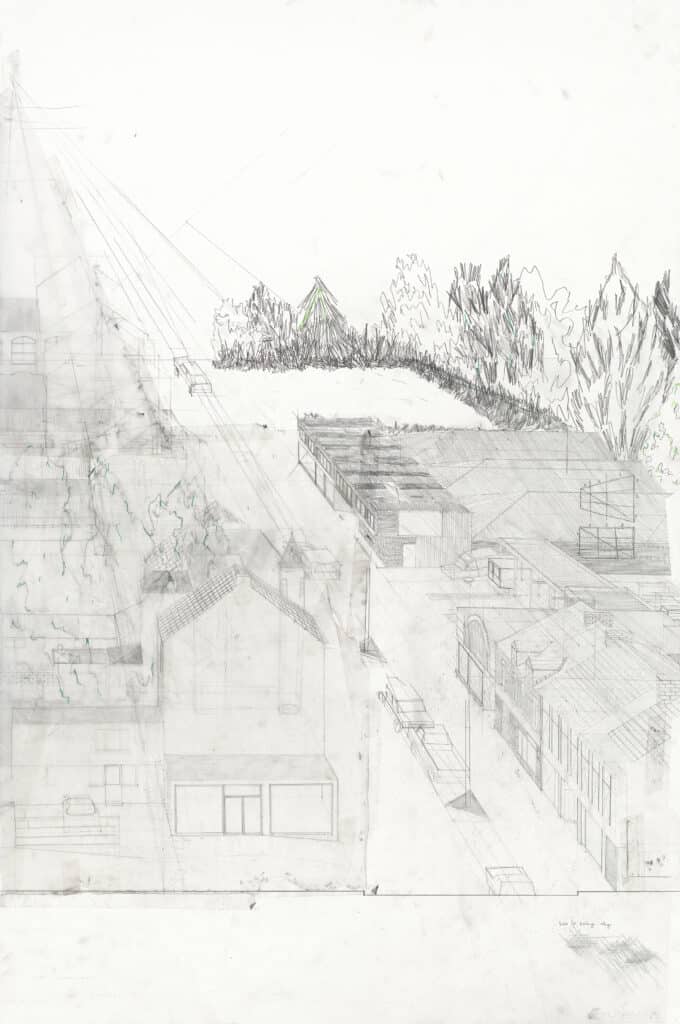
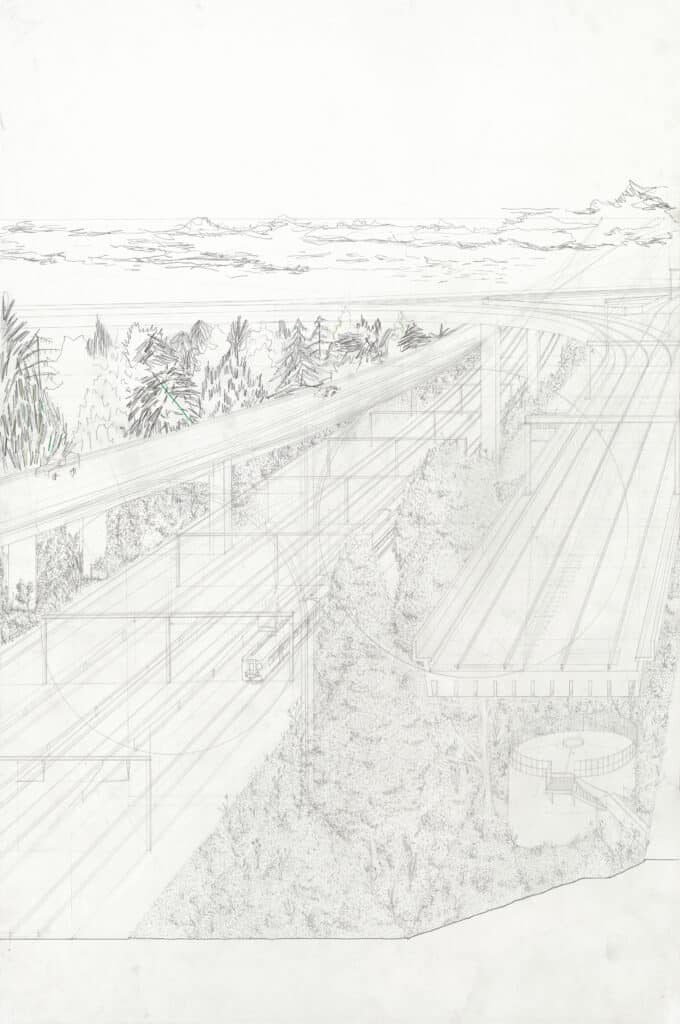
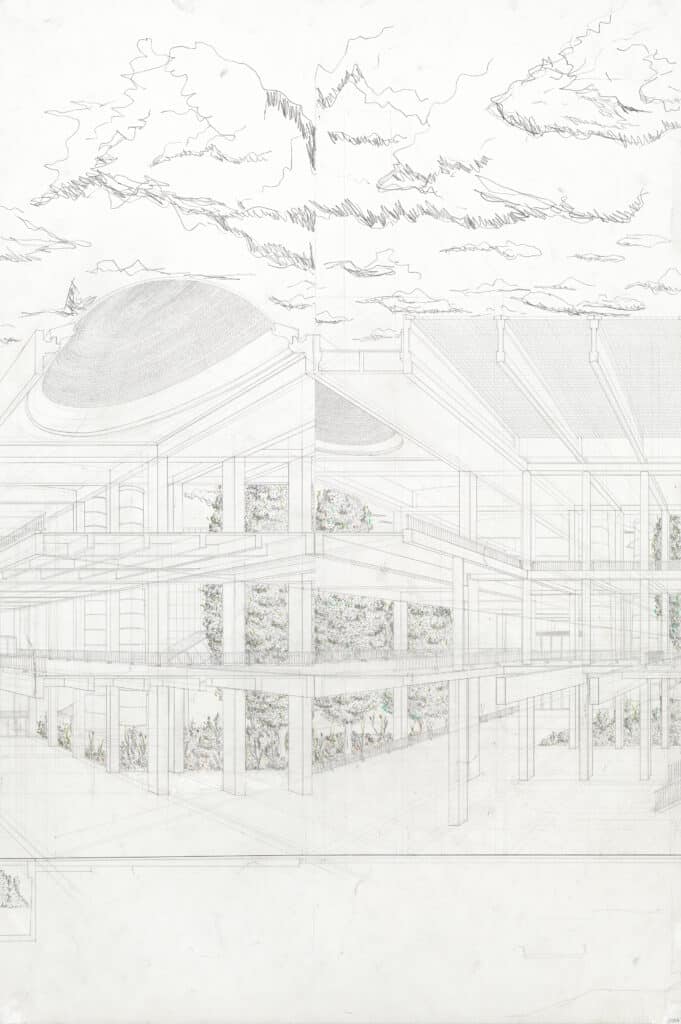
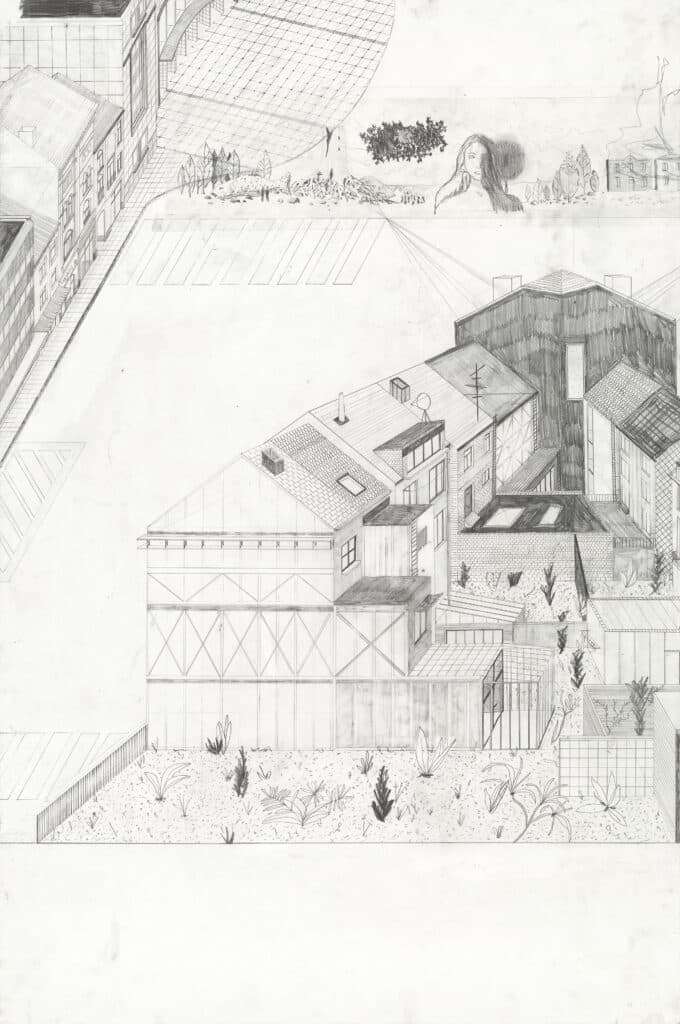
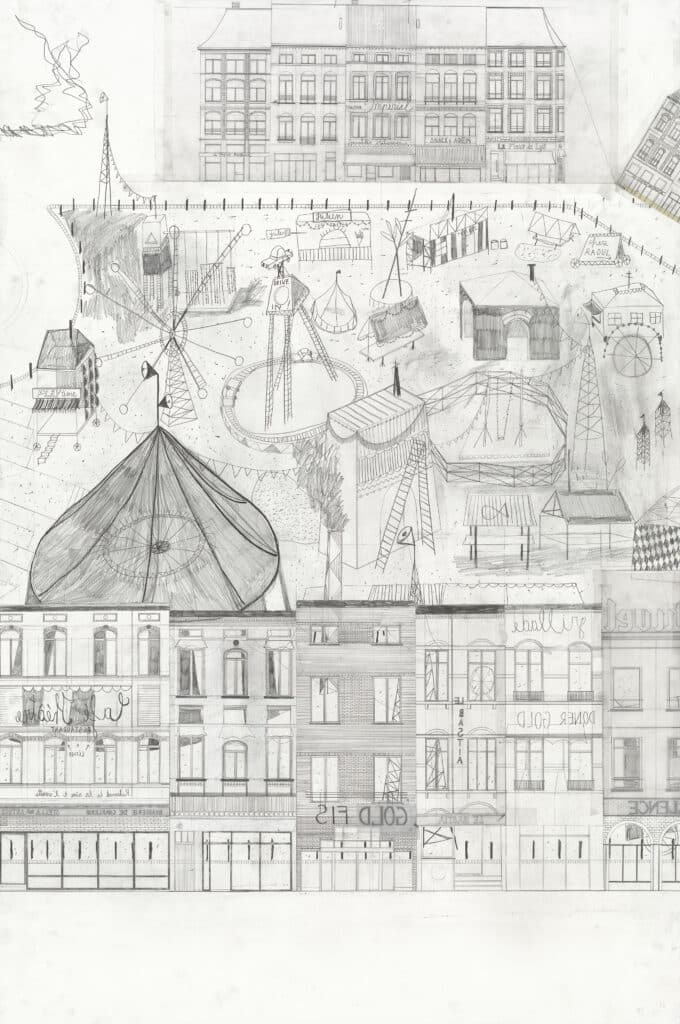
IV: The objective was not to make a large drawing just because we could. We wanted to posit the project within a far wider context, so we started to think of an elongated perspective. And when you do so, you know that it will not fit a small A4 paper. We had a basic knowledge that it was going to occupy 20 vertical A0 sheets side by side but then it grew while it was produced and so we ended with 23, I think. It is at the same time organised and unorganised, with choices and compromises that need to be negotiated while it proceeds. I was drawing a large hill and we understood that if I were to include all of it we would have had to add extra sheets on top of the mostly horizontal scroll that we were preparing, so we abandoned that idea. But that constant adjustment is inherent in the act itself: the ink might finish, the pencil breaks, there is a smear of sweat on the paper, one has to adjust constantly.
FG: How important are errors, mistakes and uncertainty for you?
JDV: They are some of the most fruitful elements of our practice.
IV: We do not actively seek mistakes – that is always a tricky issue when you operate with multiple stakeholders, and most of our projects are in fact public tenders, where the margins for manoeuvre are slim. But we try to incorporate them as ways of showing a certain level of reality in our design; nothing can be perfect and so there is no point in avoiding mistakes.
JDV: One example is the Town Hall in Lederberg where the imperfections of its construction, also due to a low budget, rather than being hidden are highlighted with red paint. In a few points, the imprecise pouring of concrete is revealed in its awkward beauty. The whole space becomes slightly surrealist. It helped that the colour that we proposed was the same as the corporate one of the contractor.
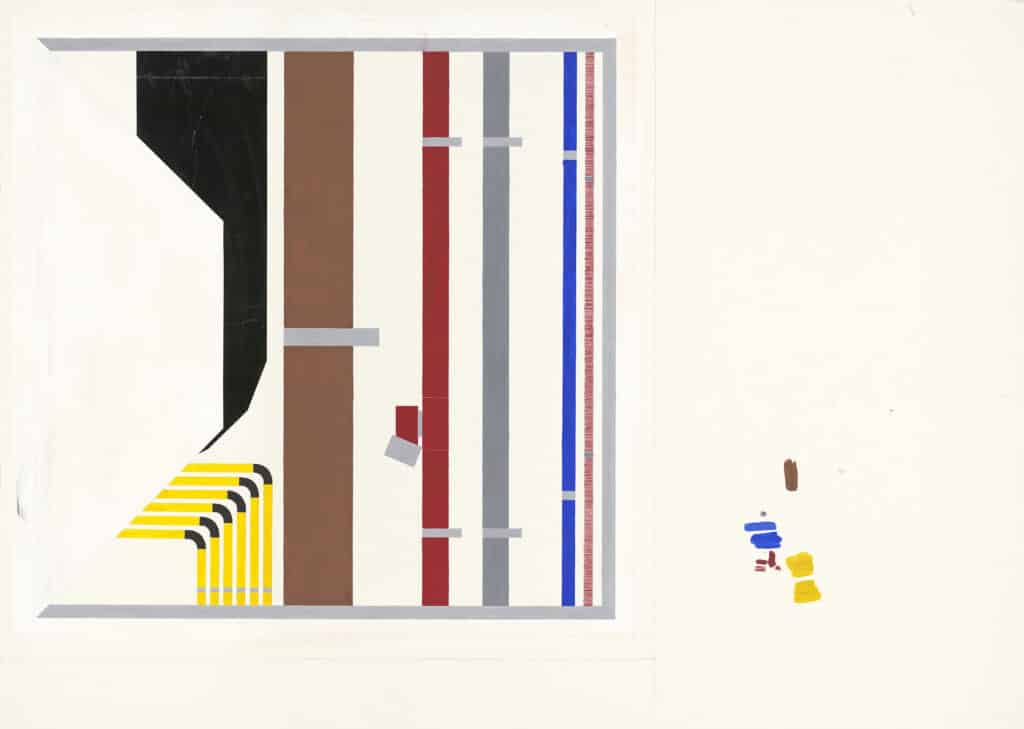
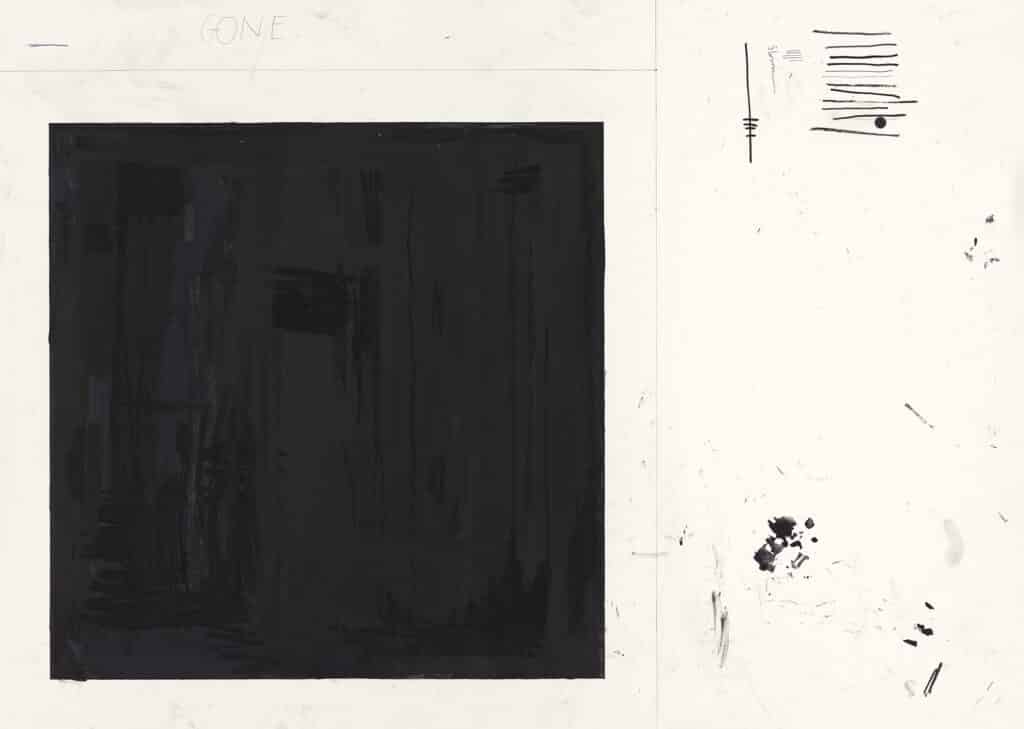
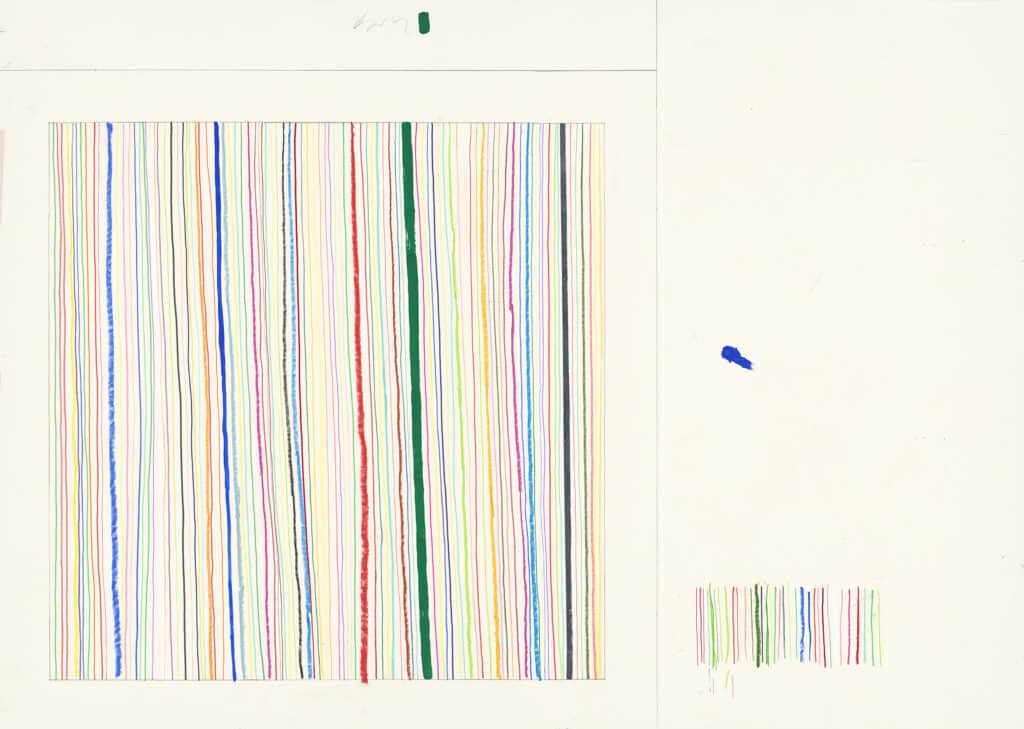
FG: I would like to conclude this conversation by asking about your relationship with text because in your syllabus you remind students that they ‘can write’ and also because you are producing a quite astounding series of publications at the ETH. How does text feature in relation with the visual?
JDV: Writing for us operates as drawing in the sense that it is not used to provide some sort of explanatory level of objectivity but rather to expand narratives, just using another register. Recently, for a rehabilitation centre for addicts, Inge wrote a series of vignettes of everyday life – not exactly what is normally expected as a project description.
IV: And the visual aspect of our texts is fundamental: the fonts, the lettering, the composition.
FG: As with concrete poetry?
IV: Yes, often the letters are scribbled and treated as drawings, playing with words for their presence on the page. Before one deciphers them for their meaning, there is already a vivid impression. This can only be done with handwriting.
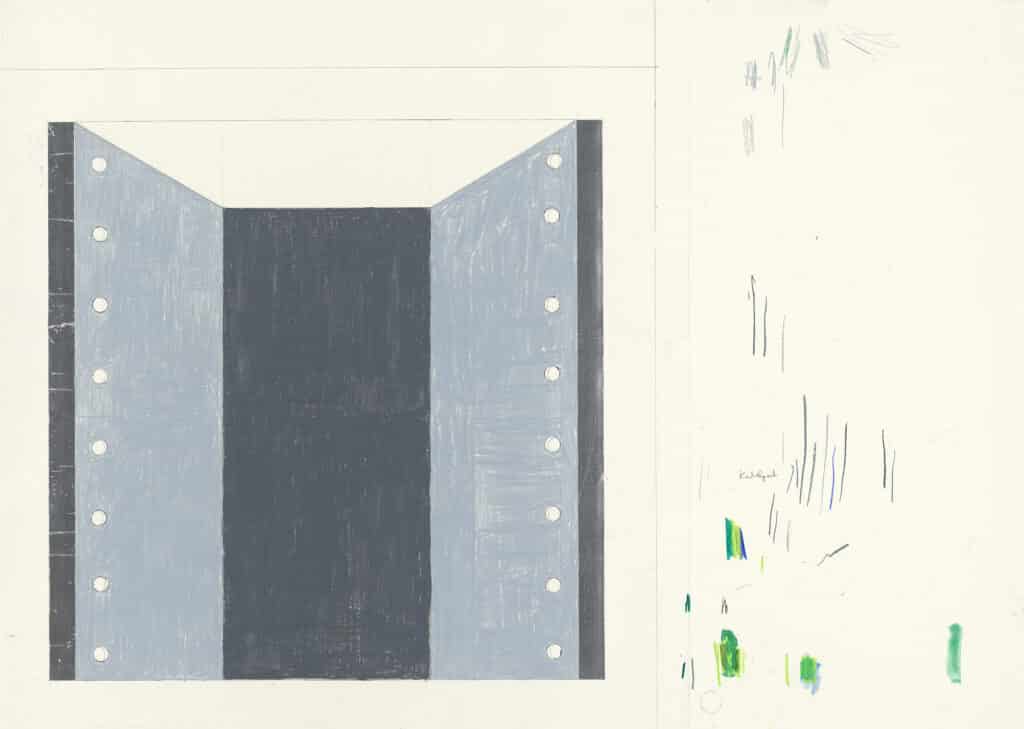
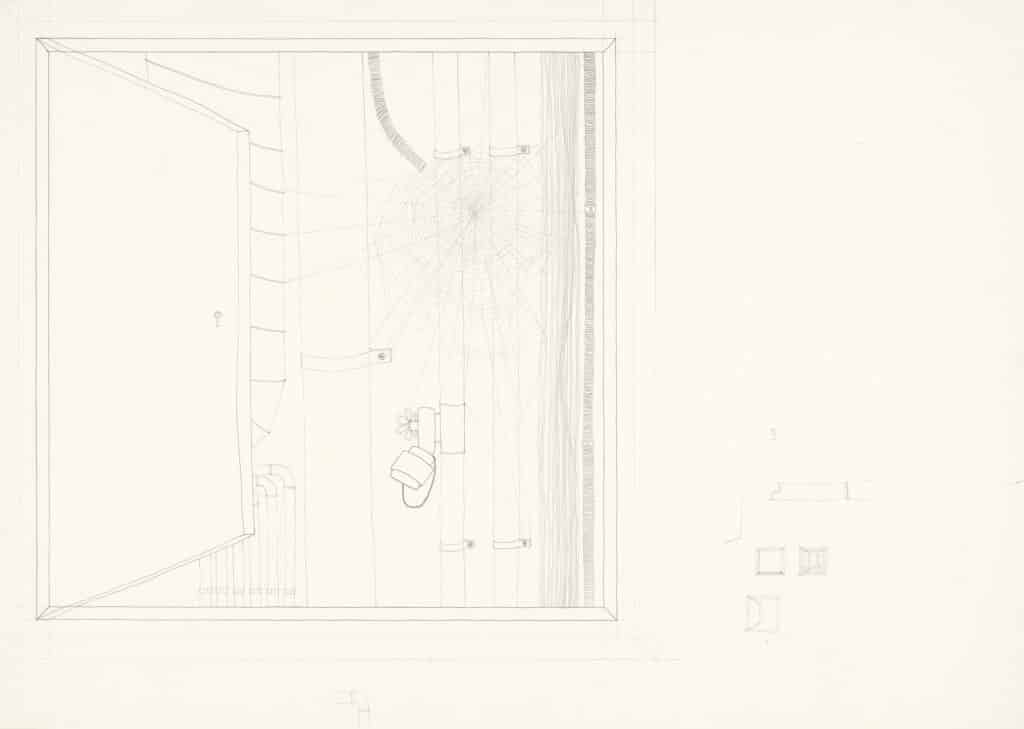
Words of an universum, words in a carrousel, words on a journey. The universum architecture can be. The carrousel architecture will be. The journey architecture needs to undertake. Universum as a personal world. Carrousel as an ongoing world. Journey as a discovery of the world.
Universum carrousel journey, carrousel journey universum and journey universum carrousel are the alter ego of many things Jan De Vylder is involved. At ETH, universum is the alter ego of the studio atelier, carrousel is the alter ego of the studio research, journey is the alter ego of the studio travel.
And they will interchange as they come, as everything is universum carrousel journey at all time.
universum carrousel journey – a studio
carrousel journey universum – a practice
journey universum carrousel – whatever
a studio – jan de vylder
a practice – architecten jan de vylder inge vinck
whatever – jan de vylder inge vinck

– Sofia von Ellrichshausen, Fabrizio Gallanti and Mauricio Pezo